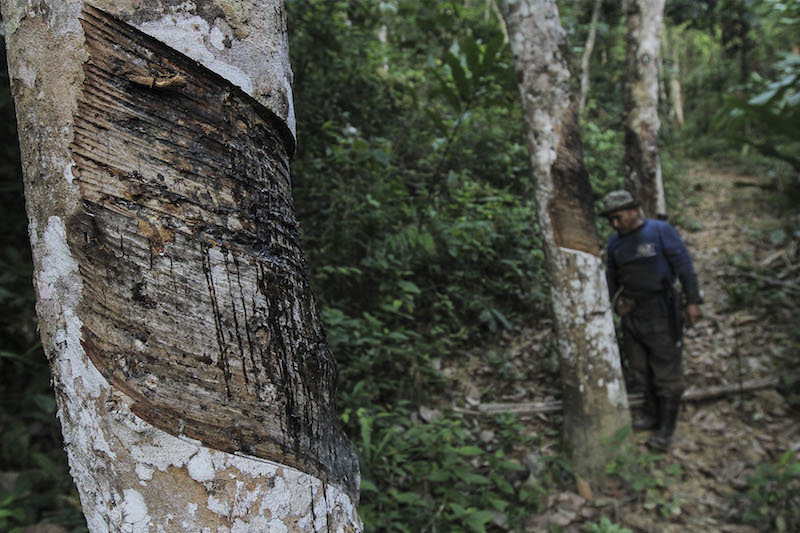KUALA LUMPUR, March 20 — The Malaysian Rubber Board (MRB) asserted its confidence that rubber prices will soon break their downward trend as initiatives begin kicking in to remove the commodity’s global glut.
A lowered export cap began this month for Malaysia, Thailand and Indonesia who make up the International Tripartite Rubber Council (ITRC), with Malaysia agreeing to cut exports for the next six months by 8.5 per cent, or 52, 259 tons. Together, the ITRC will be reducing rubber exports by 615,000 tons as established in the Agreed Export Tonnage Scheme (AETS) period which ends on August 31.
The three countries have also agreed to increase local consumption of rubber by jointly using up 300,000 tons of natural rubber annually starting this year, chiefly by increasing its usage when paving roads and construction.
“MRB is optimistic the rubber price will recover with the implementation of these joint measures. In the meantime, Vietnam has pledged their support at a recent ITRC Committee Meeting in Kuala Lumpur in March 2016 to hold back the export quota of 85,000 tons allocated to them,” the MRB said in an email response to Malay Mail Online.
“ITRC will study the impact during the implementation period and review the decision to maintain AETS for upcoming months. This decision is subject to ITRC ministers’ [of Thailand, Indonesia and Malaysia] approval.”
The drop in rubber prices has largely been attributed to China’s economic slowdown, which has reduced demand and caused a drop in commodity prices in general.
However, on top of attempting to reduce the global glut, Kedah Rubber City aims to begin development this year in an effort to centralise the rubber industry in the country for more efficiency.
Rubber City was estimated late last year to have a gross development value (GDV) of RM11.2 billion and expected to create 20,000 job opportunities in the state.
While it is a federal government project, its development is led by the Kedah state government with an allocation of RM320 million under Budget 2016.
The MRB currently holds 635 hectares of research stations located in the Rubber City area as well as lab and testing facilities in its Sungai Petani office, which the board expects to complement the success of Rubber City.
The board said that its involvement with Rubber City would entail providing “consultancy, advisory, training and testing facilities for the development.”
“These activities are to encourage rubber product manufacturers to adopt MRB technologies. The development of this Rubber City is expected to provide a significant economic and social impact to the Northern Corridor,” MRB said in its response.



















